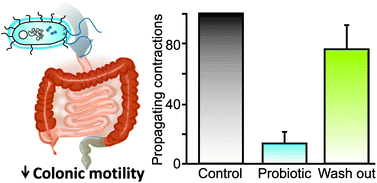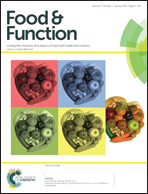The probiotic Escherichia coli Nissle 1917 inhibits propagating colonic contractions in the rat isolated large intestine
Abstract
The objective of this research was to test an in vitro motility model by investigating whether a probiotic that reduces diarrhea in humans would reduce motility in the rat colon in vitro. The probiotic Escherichia coli Nissle 1917 (EcN) the active ingredient in Mutaflor® was used as an example probiotic because it is effective for treating infectious diarrheal diseases. The effect of EcN on motility was compared in two colonic preparations. In distal colon segments EcN extract decreased the tension of spontaneous contractions by 74% and frequency by 46% compared with pre-treatment controls. In the whole large intestine the number of synchronized spontaneous propagating contractions decreased by 86% when EcN extract was applied externally and 69% when applied via the lumen compared with pre-treatment. From the inhibition produced by EcN extract in the distal colon segment a myogenic action was inferred and in the whole large intestine neural involvement was implicated. Both are consistent with its anti-diarrheal effect in humans.

- This article is part of the themed collection: Probiotics, Prebiotics and Gut Health

 Please wait while we load your content...
Please wait while we load your content...